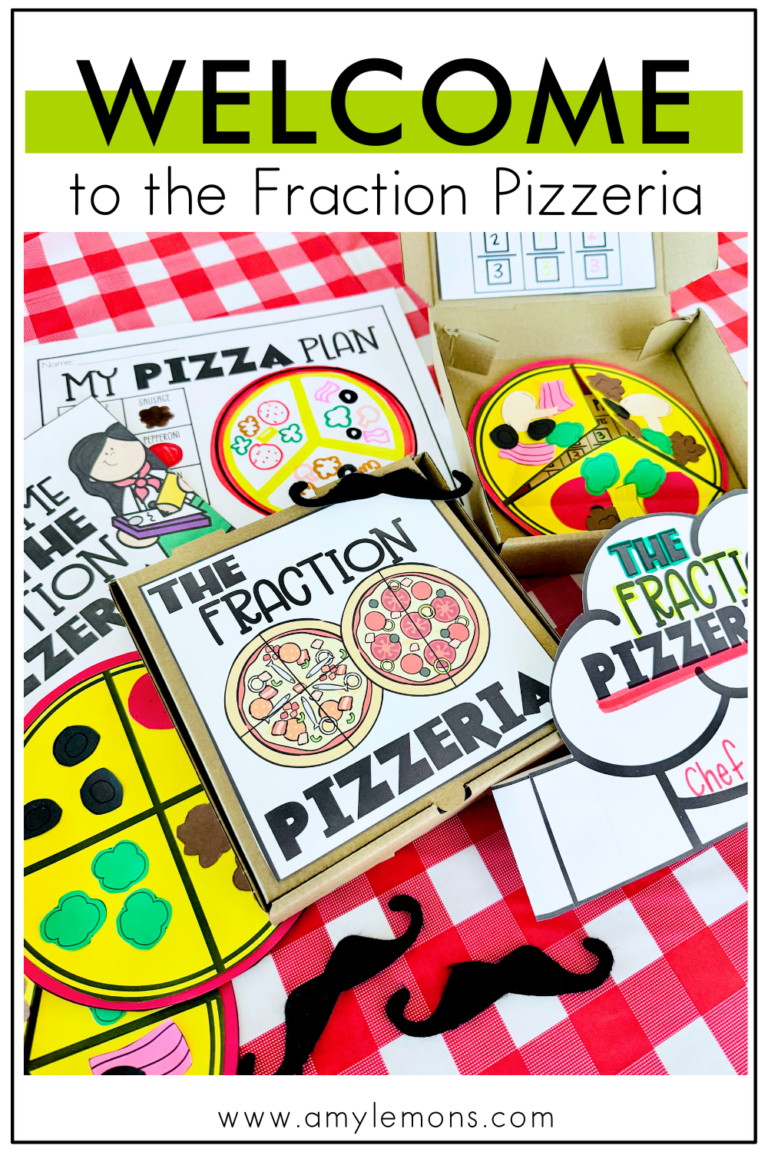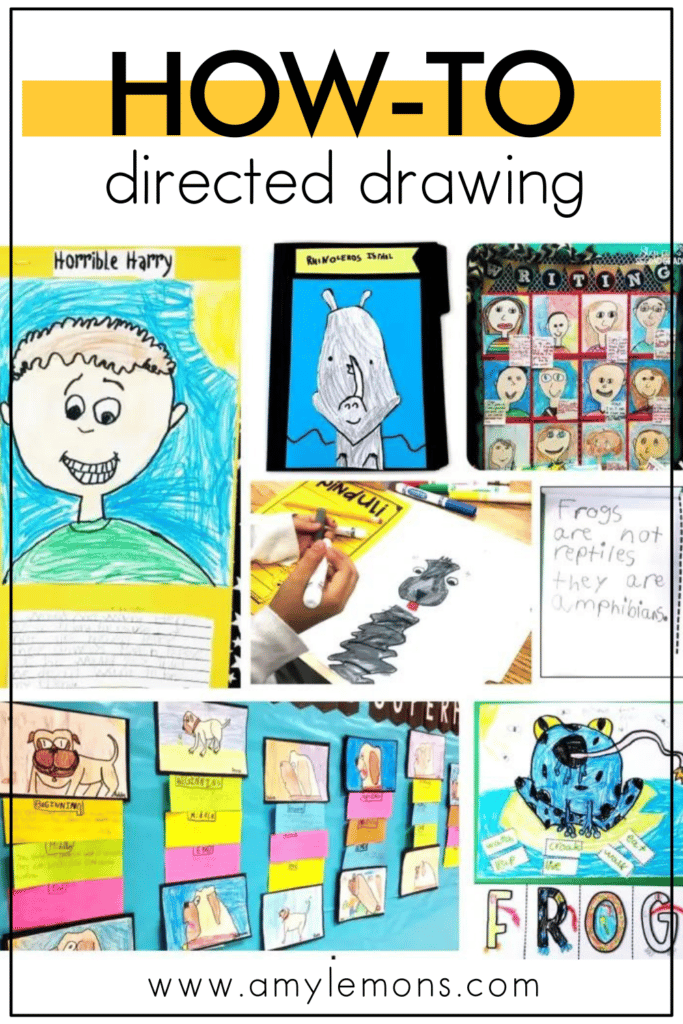

Do you want to incorporate directed drawings, but aren’t sure how to fit it into your curriculum? Or maybe you’ve heard them referred to as “fluff?” Today I’m going to give you several ideas on how you can incorporate directed drawings into your instruction. These are all classroom tested and kid/teacher approved!
After reading a series, a novel, or a picture book, students can analyze one of the characters. Students draw the character that they are describing. Then, students write about that character. Here are some ideas for the writing:

Find this Horrible Harry activity HERE
One of my favorite ways to use directed drawings is to bring a nonfiction topic to life. After reading about an animal, person, region, etc students can illustrate the nonfiction focus. Here you can see that my students drew a frog. We were also focusing on verbs during that time, so they wrote six verbs that relate to a frog.

We did informational writing along with the directed drawing and verbs. Students identified four facts about frogs and wrote those into their FROG flap-book. You can see that they also included a misconception about frogs followed by the fact.

Find this frog activity HERE.
During the Back to School season, directed drawings are great to have on hand. I have always felt they really connect me to my students. We get to sit and draw together. I’ve had so many wonderful conversations while drawing with kiddos.
They also serve a very important purpose: Practicing how to listen and follow directions. You can practice so many good listening skills while completing a directed drawing.
It also provides as great insight for the teacher. Who has spatial awareness? Who can follow along? Who feels comfortable drawing? Who can participate in a step-by-step activity?

Find Back to School Drawings HERE
Another comprehension strategy you can practice with directed drawings is retelling a story. Students can draw a character or event from the story and write about what happened during the beginning, middle, and end. You can also tie in character traits with this activity and have students describe the character that they drew.

Find Henry and Mudge activities HERE
Much like retelling, you can use directed drawings with writing a summary. Students draw the “SOMEBODY” from their summary. Then they walk through the steps and write the summary.

Find this activity HERE
One of my favorite drawings to do each year is a self-portrait. I love seeing how the students draw themselves! After drawing, students can write about their personality, their favorite things, etc. Then they can use the drawings and their notes to introduce themselves to the class!

Find a self-portrait drawing HERE
After many years of drawing with students, I think the all-time favorite thing to draw is ANIMALS! Children just love researching, learning, and drawing animals. I like to end a research unit with a directed drawing to tie all of our learning together. In my experience, the more students know about the topic, the more invested they are in the drawing.

Find this Animal Research activity HERE
I hope this gave you some ideas on how you can incorporate directed drawings into your instruction.
Don’t want to forget these directed drawing ideas? Pin the image below and save for later!


Hey, y’all! My name is Amy Lemons and I am passionate about providing students with both engaging and effective standards-based Math and ELA lessons.

Sample a day of Rooted in Reading with these lesson plans and activities for Reading Comprehension, Vocabulary, and Grammar!
2 Responses
Engaging, Practical. Enjoyable. Thanks.
Thank you. If there is distance learning again (likely), I wanted to incorporate some directed drawings. I appreciate the ideas!
Jan
Laughter and Consistency